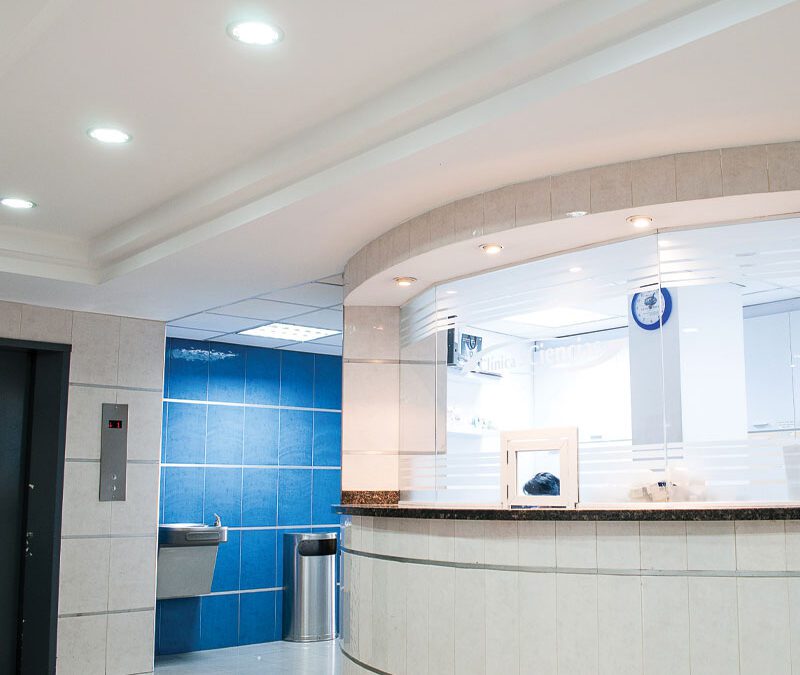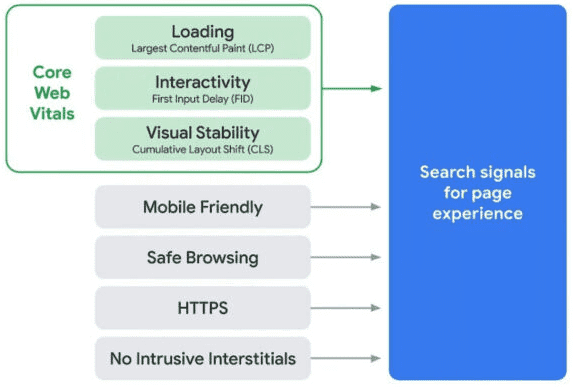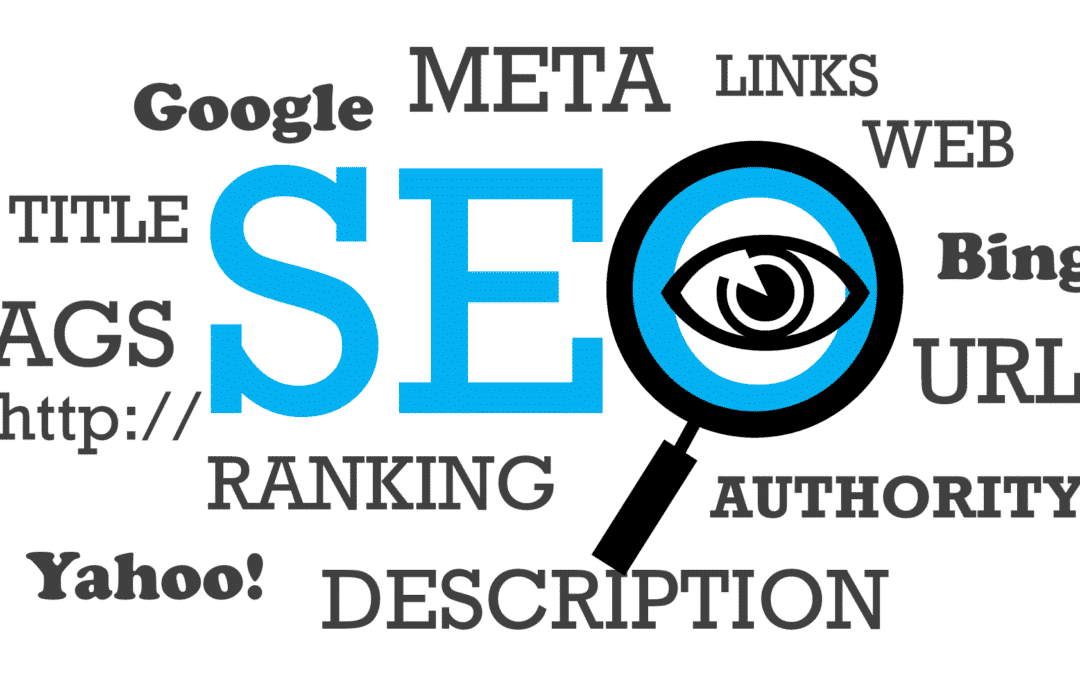
by Harris & Ward | Mar 3, 2022 | Search Engine Optimization, Dental Marketing, Social Media
Marketing Mistakes to Avoid
With 199,486 dentists working in the dentistry field as of 2018, being competitive to attract more clients is a crucial responsibility of your dental practice. The average retirement age of dentists is increasing, which means more of your competition is sticking around longer.
1. Having a Weak Website
You need a dental website that looks visually pleasing and is functional. If the visuals are outdated, poor quality, or unappealing, potential clients may click away before they get past the first page. Making the website pretty only gets you so far if visitors can’t find the information they’re looking for.
A well-functioning website is one with easy navigation where patients can clearly find the info they want immediately. It also loads quickly and is secure.
Updating your website regularly also helps. If you haven’t changed anything in years, potential clients may wonder if your practice is reliable and current on other things, like dental techniques.
2. Not Understanding Your Target Audience
Who are your typical dental clients? Your marketing strategy should change depending on your target audience, whether you’re a pediatric dentist, orthodontist, or general dental practitioner. If you cater to low-income families, your marketing will look different than a cosmetic dentist targeting wealthier clients.
Fully understanding your target audience helps with your branding, which is the image you create through your graphics, wording, and all other portrayals of your business. Including your branding in your marketing to fit your audience makes it more effective. Your clients respond better to marketing when it appeals to them or addresses their pain points.
3. Missing Out on Social Media
Social media connects you with current and potential patients in ways you can’t achieve with a website alone. You interact directly with the people who follow your page, which builds a relationship that makes your dental practice different than the competition.
You can also use social media channels to have your loyal patients spread the word about your dental practice. Seeing engaged followers, likes on your post, and shares of what you post builds a positive image of your dental practice.
Social media also allows for stronger industry relationships and cross-promotional opportunities. If you specialize in pediatric dentistry, you might share information or a post made by a local orthodontist. Building those relationships and sharing referrals can help grow both businesses.
Trying to use all social media platforms takes too much effort and often isn’t effective. Choose social media platforms that match your target audience best to maximize your time. Master one or two platforms to avoid spreading yourself too thin.
4. Ignoring Local Search Potential
Your online presence is only effective if people can find you. Search engine optimization helps people find you through searches. SEO incorporates complex factors, including keyword usage, formatting, and quality of your content.
As a service provider, you want to attract local traffic. Massive web traffic doesn’t help grow your business if visitors aren’t local and won’t use your dental services.
Including local keywords and clearly incorporating contact information into your website helps Google figure out where you’re located. This allows you to show up when people search for local dentists.
5. Failing to Adapt Your Strategies
Dental marketing strategies change frequently. If you stick with the same dental and orthodontic marketing strategies, you’ll get left behind.
Incorporating several different marketing strategies helps broaden your appeal. Content marketing, such as blog with helpful dental information, can draw in more web traffic. Email marketing lets you communicate directly to current patients and prospects.
You don’t have to use every possible strategy, but being open to new options can make your marketing more effective. Working with a marketing company that specializes in helping dental practices can help you stay on top of the latest marketing techniques.
6. Not Managing Your Online Reputation
Word of mouth is changing from telling your neighbor about your experiences to blasting your opinions all over the internet. One unhappy patient can drag your dental practice’s online reputation through the mud. But online reviews also help SEO, which makes your dental practice easier to find.
Your online reputation can affect a potential patient’s decision on using your practice. Statistics show that 90% of people go online to look for reviews on businesses. Online reviews hold as much credibility as personal recommendations for 84% of consumers.
One or two negative reviews may not hurt your reputation too much, but be aware of repeated complaints and negative feedback. Monitoring your online reputation can alert you to issues you need to address in your practice.
Increasing the number of positive reviews you have can help overshadow one or two rogue negative reviewers. Providing the best customer service increases the chances of positive reviews. Don’t be afraid to ask satisfied patients to leave positive reviews for your practice.
If you decide to address negative reviews, keep in mind HIPAA regulations and patient privacy. You can’t reveal any personal information or anything related to the care received. You can post a general response acknowledging the situation, but word it carefully and avoid an emotional response or an escalated argument with the unhappy reviewer.
7. Ignoring Data
Trying all the latest trends in dental marketing doesn’t help your business if you don’t analyze its effectiveness. Not every strategy works the same for every dental practice. Simply using various strategies doesn’t mean you’re implementing them effectively.
Google Analytics helps you see your web traffic to see if your marketing campaigns are working. Looking at the sources of traffic and which pages on your site visitors use can help you focus on the most effective practices and improve those that aren’t as effective.
Effective Dental Marketing
Effective marketing makes your practice more visible with potential clients. When done well, it establishes you as a local expert in the dental field.
But simple marketing mistakes can turn away potential clients or make your practice difficult for prospects to find. Since your area of expertise is dentistry, you may not even realize you’re making common mistakes.
Improve your Digital Marketing Strategy Today
Strong dental marketing keeps your practice competitive and helps you attract new patients. Plan a well-rounded marketing strategy to reach prospects via different avenues. If you’re ready to improve your dental marketing, explore our services for more details of what we offer.
Drive Leads with Paid Search
Digital advertising, such as PPC, can be an excellent way to help your business stand out in a crowded marketplace. Contact us today to discuss how PPC can help small businesses like yours!

by harrisward | Jan 19, 2022 | Search Engine Optimization
The Best SEO for Medical Spas
SEO can provide your med spa with a steady stream of customers. SEO strategies put you in front of customers who are actively looking for your services.
Medical spas can also use paid advertising and social media. However, an SEO strategy adds the icing to the cake.
SEO marketing puts medical spas in front of search engine users. People may find your med spa by searching on Google. They may look for nearby medical spas and see yours.
Many medical spas optimize their websites and content to rank higher. Google only has a few spots on their first page. How can your medical spa rank above the others?
We work with several medical spas and can help yours rise above the competition. We’ll share some SEO marketing best practices to boost your medical spa’s visibility.
Make Your Website User-Friendly
Google continuously works to optimize the user experience. Low-performing websites get removed from the first page.
A user-friendly website gets you on Google’s good side. User-friendly websites contain clear navigation and calls to action.
Load time influences your website’s user-friendliness. Users will not wait for a website to load for 10 seconds. People want quick access to web pages.
You can use a website loading speed test to see your current status. Strive for a load time under five seconds.
Shorter load times don’t only help with search engines. They also increase retention. People will spend more time on your site.
Search engines also look at your website’s mobile experience. Some medical spas only focus on the desktop version of their sites.
A friendly desktop setup will get derailed by a poorly designed mobile site. Many people use their smartphones to browse the web. Search engines don’t want to show poorly optimized pages on mobile devices.
Produce Content with the Right Keywords
Creating content helps you rank on search engines. People can type phrases and find your blog posts.
Blog posts also help promote your services. You can invite readers to schedule an appointment at the end of your blog posts.
You can also explain why patients should get specific procedures. Answering common questions will make customers feel more confident about your services.
Your content can also clear up objections. Business owners should determine common pain points and objections. Addressing these concerns in your content will warm up prospects.
Content boosts sales and visibility. However, you must use the right keywords for your content. Failing to conduct keyword research will significantly limit your content’s reach.
You can use a resource like SEMrush to conduct your research. This tool provides vital data about keyword volume, competition, trends, and CPC numbers.
Free SEO tools such as Yoast, Google Trends, and UberSuggest also help with research.
Once you find keywords, start incorporating them into your content. Sprinkle the keywords into your content while avoiding keyword stuffing.
You can create articles around individual keywords. Writing more blog posts lets you spread your efforts instead of relying on a single piece.
Use Meta Titles and Descriptions
The Google algorithm isn’t as smart as business owners think. An algorithm won’t know what your blog post or page covers.
You must inform the algorithm about your blog post’s topic. Meta titles and descriptions achieve this goal.
Search engines will look at your meta titles and descriptions for guidance. These features tell Google what your site covers.
You can use a meta title and description for each blog post. If you do not provide a custom meta title, Google will look at your title header.
Without a custom description, Google will review your blog post’s first 155-160 characters. These initial characters may not include the keyword. Your initial 155-160 characters may not draw potential visitors.
Custom meta titles and descriptions do a better job of drawing visitors to your site.
Build Backlinks to Outrank Other Medical Spas
Google heavily weighs backlinks when ranking websites. When another website links to yours, it’s a backlink. These links indicate trust and authority.
Over a decade ago, companies would buy backlinks in bulk. However, Google shut down this strategy and penalized companies with spammy backlinks.
This practice kept out bad actors. However, many people misinterpreted this event as the death of backlinks.
Backlinks remain a vital way to gain traction, but only if you get them naturally. Writing guest posts is a common strategy to get backlinks. You can write for other sites and include a link to your med spa in the byline.
Capitalize on Local SEO
Most medical spas don’t want international traffic. They can only provide services on-site. These medical spas need a local SEO strategy to get new customers.
Your med spa must have a Google My Business account. This account lets your company rank for local search terms.
You should mention all of your locations on your website. This information will help prospects find the best location to receive your services. You may even want to create a page on your website for each location.
Get Professional Help for Your SEO
Medical spas around the world compete for a few spots on Google’s first page. Med spas in your area compete to get a share of the local market.
Enhancing your website’s SEO will increase your reach and lead to new customers. However, SEO can get complicated. Even if you know what you’re doing, it takes time to implement and see results.
Small businesses use our SEO services to reach customers and expand revenue. Get in touch with us today to see how we can improve your SEO results.

by Harris & Ward | May 11, 2021 | Search Engine Optimization
Google confirms Core Web Vitals are becoming ranking signals for search results.
Google is now postponing the Google Page Experience Update. Google announced it is changing it from launching in May to sometime between mid-June and the end of August. Some minor items are launching now, some are rolling out in mid-June and the rest will take through the end of August to completely rollout. Here is what is changing and some great articles to learn more.
BIGGEST TAKEAWAY? Focus on your Core Vitals first.

The ‘page experience’ signal combines Core Web Vitals with the following signals:
- Mobile-friendliness
- Safe-browsing
- HTTPS-security
- Intrusive interstitial guidelines
Schedule a call with our Marketing Director
Want to read more? Take a deep dive into articles from our friends at Search Engine Journal and Search Engine Round Table. Still have questions? Click the link above to schedule 15 minutes with our Marketing Director about Search Engine Optimization.

by harrisward | Feb 12, 2021 | Search Engine Optimization
Studies show that less than 1 percent of Google searchers click on sites beyond the first page of results. That means you need to get listed on that first page if you want to get any new patients from web searches.
Search engine optimization (SEO) will help you get your website ranked in the top results. Let’s look at how you can use SEO techniques to drive more patients to your practice.
It’s All About Keywords
The foundation of all SEO work is keywords. Those are the words and phrases that someone looking for a chiropractor would likely type into the Google search box.
Terms like “chiropractor near me” or “chiropractor in city name” are logical searches for someone looking for a local chiropractor. On the other hand, a search like “what does a chiropractor do” probably isn’t someone looking for your services.
You can use tools like Ahrefs and the Google Keyword Planner to develop a list of keywords to target. Once you have those, work them into the content on your website to help it rank higher.
Focus on Local SEO First
Your chiropractic practice likely serves local clients for the most part. If that’s the case, it doesn’t matter how you rank for someone searching for a chiropractor in another part of the country.
Focusing on local SEO will help you reach the people who are close to you and most likely to become patients.
There are several important steps to optimize your website for local searches, including:
- Complete your Google My Business profile
- Use a consistent NAP (name, address, and phone number) everywhere on your site and other pages like Facebook and Twitter
- Create a separate page on your site for each service you offer
- Get reviews from your existing clients
The local search results in Google show a map with your location, review ratings, and other details right in the listing so it’s important to make sure it’s all available to Google.
Your Website’s Performance Is Critical
How quickly your website loads is important for a couple of reasons. First, studies show that people will click away from your site within a few seconds if it doesn’t load immediately (known as a bounce).
A slow website means you’ll lose a lot of potential patients before you even have a chance to connect with them.
Second, a high bounce rate will negatively affect your search rankings in Google. If someone clicks on your site in the results and almost immediately clicks back to try another one, Google can see this happen. If it happens often, it tells Google your site isn’t a good solution for searchers and it will stop showing it in the top results.
Make sure you use a high-performance web hosting service. It might mean paying a bit more but it’s worth the cost if it helps you get more patients.
Build Backlinks to Your Website
Another fundamental component of chiropractic website SEO is what’s known as backlinks. These are links from other sites pointing to yours.
The original PageRank algorithm that was the basis for Google’s search engine used backlinks as the primary way of determining a website’s value. The idea was that links pointing to a web page were like votes — more links meant the page must be more valuable.
Google’s algorithm has evolved to consider far more than just links but they’re still an important part of the calculation. Getting links from local websites like Chambers of Commerce, community pages, and other businesses will help your site rank higher.
Use Social Media
Social networks like Facebook and Twitter are a great way to connect directly with your current and potential patients. You can use these websites to answer questions, share your knowledge, and drive traffic to your website.
Google doesn’t give links from those sites as much credit as links from other places but they are still backlinks. And having more people commenting and sharing on your posts there helps create “buzz” which Google does take into account in its ranking algorithm.
Create a Content Marketing Strategy
Content marketing is one of the most effective long-term SEO strategies. This is the process of sharing information, both on your website and through other channels like social media and other blogs.
Content is usually text-based, such as blog posts or articles written for other websites, but it also includes things like YouTube videos, Instagram and Snapchat posts, and podcasts or other audio.
There are lots of ways to come up with ideas for things to create content about, such as:
- Answer common questions from your patients
- Write about health-related topics in the news
- Weigh in on local news or events
If you publish new content on a consistent schedule, it helps “train” Google to check your site more often. Fresh, valuable content is another factor that Google considers in its algorithm.
Track Your Results
Once you start optimizing your website for better rankings, you’ll start to see your traffic increase. But unless you’re tracking the results, it’s hard to know exactly what’s working and what isn’t.
Use a tool like Google Analytics to track the visitors coming to your website. It provides details like:
- Where visitors are coming from
- What pages they visit once they land on your site
- Which pages have the highest and lowest bounce rates
When you change something on your website, give it enough time to gather some data and then compare the results with the numbers before the change. This type of A/B testing will tell you what’s working and what isn’t so you don’t have to guess.
Where to Get Help With Your SEO Strategy
Healthcare SEO isn’t a complicated process but it does take some time to implement. And Google is constantly tweaking its algorithm so you need to stay on top of the latest changes if you want to keep your rankings.
If you’d rather focus on your practice and leave the SEO work to experts, Harris and Ward is here to help. We offer a range of SEO services to help improve your search engine rankings and bring more patients into your practice.
Get in touch with us today to find out how we can help your practice grow.

by harrisward | Nov 30, 2020 | Search Engine Optimization
In your community, 97% of people turn to the internet to learn more about a local business.
With an increase of ‘near me’ searches, if your small business isn’t optimized for these local searches, you’re missing out on a highly valuable market.
So how can you get discovered by audiences in your area? It’s time to adopt a local SEO strategy.
If you are ready to maximize your relevant reach and grow your small business, you need this marketing technique for success. Follow along to learn all about the benefits of local SEO and how this strategy can work for you.
What Is Local SEO?
SEO, or search engine optimization, is the practice of setting your website and all of your content up to appeal to algorithms that search engines like Google, Bing, and Yahoo have in place.
While general SEO focuses on acquiring high rank in niche-specific queries, local SEO pulls geographical location into the equation.
While many of the same principles apply, there will be a shift in keyword use and backlinking to gear towards local audiences and maximize impact in a smaller pool of competitors.
How Does Local SEO Work?
Each search engine has one mission: To produce the best results for a user query.
To do this, search engines use artificial intelligence to crawl, index, and rank all online content and filter out the best results. Your position on the results page relies on your website containing the necessary elements Google wants and leaving out penalizing elements.
Local SEO works to gain preference from these platforms with a more specific target. Instead of competing with the major companies in your market, you’ll be working to stand out in your community.
Techniques like including location-specific terms in keywords, and backlinking to local events pages will boost your presence in a more relevant area. This will increase your rank position when nearby searchers look for your product or services.
Benefits of Local SEO
Focusing your SEO on local markets takes your little fish status out of the big pond and plops you in a more realistically sized pool. Since most small businesses rely on local consumers to grow, the benefits of this approach are undeniable.
If you’ve been asking yourself “Should I use local SEO?”, then here are your reasons to start.
1. Improve Online Visibility
The first 5 results of Google collect 67.6% of user clicks. This is not including the paid ads featured on the top of the page.
If your business isn’t appearing in those top 5 positions, or even on the first page, chances are audiences don’t even know you exist.
The number one success factor in your business is customers, so you need to start putting yourself where they are. Using Local SEO techniques will help you crack into the top organic results and improve your chances of being found.
2. Build a Community
Businesses and consumers alike are sinking into the importance of building a community and keeping the local economy alive. When your business starts making efforts to link and connect with other local companies, you’ll see the effects online and off.
While having more reputable local backlinks is a great way to boost your rank, it also opens the door for supportive working relationships. Refer your customers to their relevant services and they’ll be inclined to do the same.
Your clientele will trust referrals more and often find it more efficient to visit businesses within their area to start with.
3. More Relevant Traffic
72% of local searches resulted in an in-person visit within 5 miles of the user.
When you target local consumers, your encouraging web visits from people who may actually come and visit you.
Using a broad SEO approach for a business that relies on local traffic opens you up to a lot of dead-end visits. Let’s say for example that you have posted a blog with helpful tips and tricks relating to your product or service. If you’ve neglected to use local targets, you’ll be landing hits from all over the world.
While having this broad reach feels great, the chances of an overseas hit becoming a paying customer are pretty slim.
4. Local Return Customers
As we mentioned before, customers are seeing more and more value in supporting the local economy. Beyond this, doing business in your area is often more convenient.
With local SEO you’ll have two key touchpoints for nearby customers. First, they’ll discover you and stop by. Your business then can provide them with an incredible experience and win them over as a loyal customer or client. Next, when they need these services again, your name will pop up at the top of the search and trigger their memory.
5. Build Trust and Authority
Consumers assume that high-ranking companies have been vetted by Google and are trustworthy businesses.
Gaining a prime spot on the results page will encourage your audience to trust your business and gain their respect. This high-position also portrays you as an authority for your niche and elevates your level of appeal.
6. Reduce Ad Costs
Organic traffic has taken over as the most valuable audience for businesses. While paying for ads may have been your only chance at high-visibility before, using local SEO will reduce your need for these measures.
Building your rank will allow you to use Google as a free advertisement for your business and gain more valuable clicks than a paid ad.
7. Increased Sales
An increase in relevant traffic leads to a boost in sales. With local customers prepared to buy, showing up as an authority in your area will increase your chances of being the landing spot for their purchase.
If local searchers aren’t quite ready to seal the deal yet, they will be encouraged by your proximity and optimal availability. Instead of finding businesses that are hours away or require them to blindly purchase online, they can visit you and get to know you as a local.
Time to Get Local
From increased visibility to a more trustworthy appearance, breaking into local SEO is a great option for your marketing efforts. Stop spending your time and money on unrealistic competitor markets and zone in on building meaningful impressions right where you need them.
Ready to maximize your business but need some help? Get in touch with us today to discover how our local SEO services can take your small business to the next level.

by harrisward | Oct 30, 2020 | Search Engine Optimization
If you want your business to appear in the first few pages of a Google search, you need search engine marketing (SEM). This is different than SEO.
SEM is one of the best ways to land new clients. You can have your business pop up on the first few pages of Google. This allows your business to stand out from your competitors.
The better ads you create, the more likely you’ll rank on Google. People will find answers to their questions when it’s about your product and your business.
But there’s more to SEM than you might think. You have to figure out what strategies to utilize that can help your business drive in more traffic. You need to know the best SEM tips.
Here are 8 search engine marketing tips that can give your business a boost.
1. Know Your Audience
One of the most important parts of your search engine marketing campaign is to know your audience. You need to know who they are and what kind of problems they have in order to effectively create ads.
The more you know about your target market and why your product can help them, the more you can create ads that appeal to them. You can create ads that offer a solution to their problems.
Knowing everything about your target market involves knowing where they live, what kind of problems they have, their interests, and how your product helps them solve a problem.
This information can help you write ads that appeal to your target market.
2. Make It Persuasive
Another part of search engine marketing is making sure the copy you write is persuasive.
You can’t expect consumers to visit your website just because you show your product in an ad. You have to make it appealing and persuasive. That means highlighting the features of your product.
Being specific about the product you designed can help people. You want to show it in your body copy when you write search engine marketing ads. That way, when someone does a Google search relating to your product and they see it on top of the Google search, they will click it because it appeals to them or answers their question.
3. Do Your Keyword Research
Keywords are critical if you want to have your ads be seen. You need to choose keywords that your market is using and (optimally) that your competitors aren’t using.
When you choose either short-tail or long-tail keywords and place them in your search engine marketing, Google will rank your ad higher. It’s more likely your ads or content will be seen by your market.
However, it’s important to remember that you don’t want to assume you know the keywords people are using. You should do keyword research and determine the volume and competitiveness of the keywords you need for your ads.
4. Consider Your Maximum Bid and Quality Score
Your maximum bid and the quality score of your ad will determine how it ranks on Google. In fact, Google looks at these two things to determine if your ad is better and more relevant to your target market beyond your competitors.
They look at these metrics to see if it’s more relevant for your target market.
5. Consider the Best Tools
When you embark on learning and mastering search engine marketing, you need to make sure you have the best tools with you.
For example, you want to make sure you have tools that can help with keyword research, how much traffic your website is receiving, and how difficult the keyword you want ranks.
You should also take a look at Google Trends, a free tool that helps you see what keyword is popular or unpopular.
6. Have a Consistent Strategy
A consistent strategy involves choosing an SEM strategy. You have to figure out if you are going to do organic or paid advertising.
When you figure it out, you need to be consistent. For example, if you write ads on Google, you need to be consistent and figure out what’s working and what doesn’t work.
You have to be willing to adjust in order to have the most success.
7. Take a Peek at Your Competition
You should always see what your competition is doing. See how they are ranking on Google. What are they doing differently?
When you have an idea of what your competition is doing, it gives you insight into your own marketing strategy. You can figure out a strategy that outperforms that on Google searches.
8. Provide Quality Content
Another part of search engine marketing and ranking high on Google is making sure you provide quality content.
This means writing content on your website that is informational and insightful for your target market. You want more valuable information than what your competitors have.
Writing quality content means you understand what your market is looking for. You know how their interests are changing based on the popularity of keywords.
When you understand your market and send them information that isn’t clickbait, but rather insightful and helpful, it will help you build a long-term relationship with your consumers.
Learn More About Search Engine Marketing
Search engine marketing can help your business attract more leads. With the perfect strategy, you can attract more website visitors and show people how you can help them.
With these tips, you can see how effective search engine marketing is for your business. The key is doing the research and seeing what works and what doesn’t work for you.
If you want help with your search engine marketing strategy, you can contact us here.












